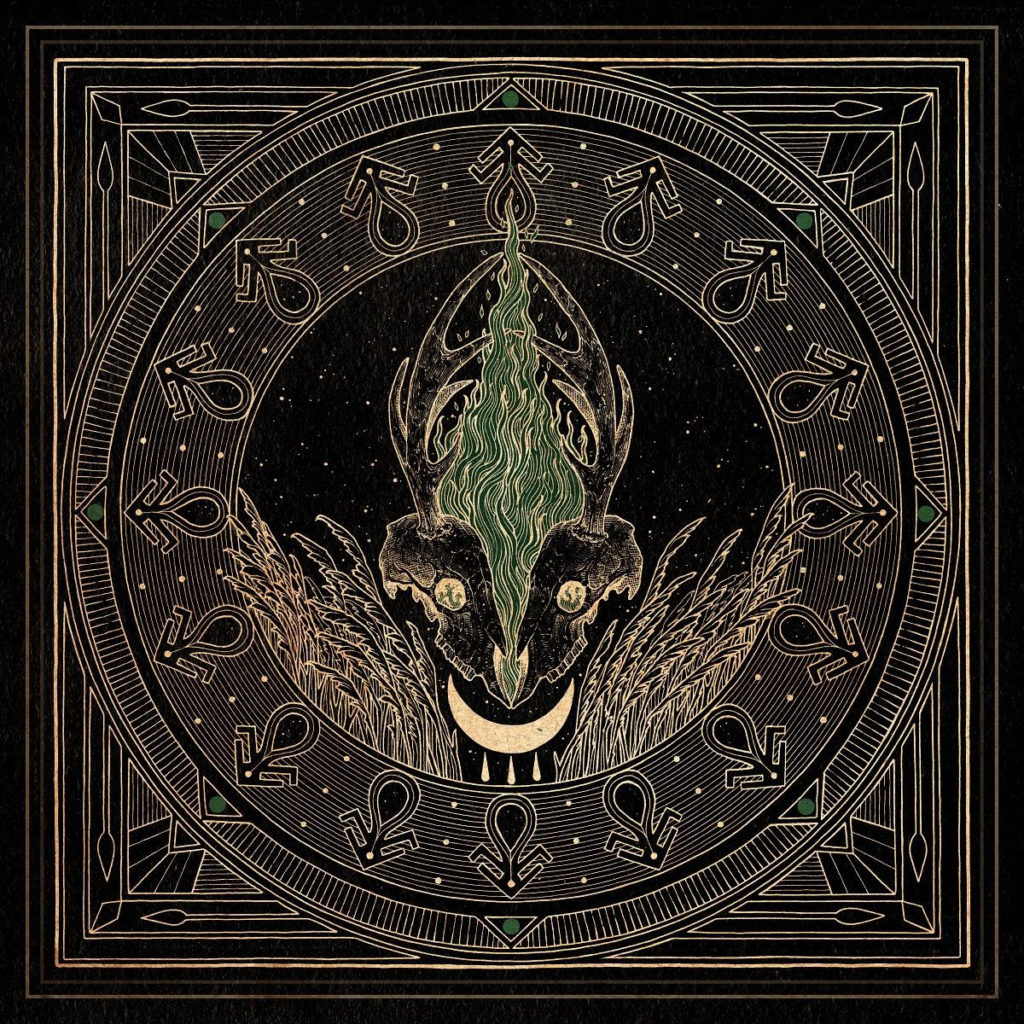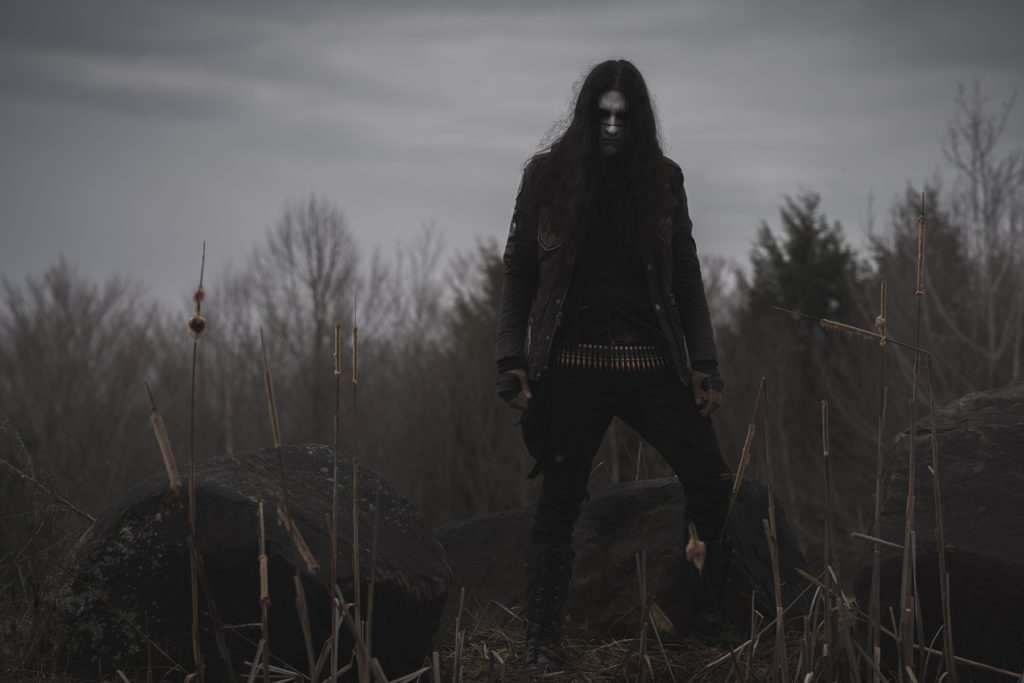Blackbraid II
Reviewed By: Jason Deaville
Rating: 9.5

There is a simplicity to this world that often goes unnoticed in today’s fast-paced, gotta-have-everything-right-now society. But, if one takes the time to free themselves of all the worries, stresses, and anxieties that everyday life constantly bombards us with, the simplicities begin to reveal themselves in many magical and awe-inspiring ways.
Of course, nature is teeming with complexities. One look at a thriving garden reveals an intricate ecosphere that rivals the swirling, vexing entanglement of the deep recesses of our universe. Yet, if you lay your weary, burdened bones down in that same garden – free of all tribulation – a clarity begins to trickle out. If you lay there long enough, eventually that trickle becomes a flowing river of consciousness. Soon enough, the purity of our world begins to unravel itself in ways never seen before. Life becomes… simpler.
In the realm of contemporary black metal, New York one-man band, Blackbraid, is that garden, and new album, Blackbraid II, exudes both the aforementioned complexities and simplicities.
From the depths of the Adirondack wilderness, Native American front-man and composer extraordinaire, Sgah’gahsowáh, shed every fiber of the human ego to create one of last year’s most critically-acclaimed albums, Blackbraid I. The music contained within is equally as raw and powerful as the mountains from whence it came. It struck a balance that has been sorely missing from black metal, radiating a tension and symmetry of both profound extremity and utter remoteness. Within any given song, one can be pulled through each and every human emotion, yet come out the otherside feeling exhilarated and the spirit fulfilled.
Often, such variance in musical temperament can leave a listener exhausted. This is particularly true of black metal, which can be a taxing listening experience to both an untrained and impatient ear. On the contrary, compositionally, Sgah’gahsowáh had done the unthinkable, he left the listener wanting more. Much more, in fact. It’s not uncommon to spin Blackbraid I twice… thrice… heck… even four times in one sitting. The true genius of Blackbraid is the attention commanded of its composer and the captivation given of its listener.

So, it should come as no surprise that Blackbraid II is equally, if not more, impressive than the debut. Sgah’gahsowáh has admitted in the past that he did not expect Blackbraid to be anything more than a personal project, for his ears only. There was no forethought given to any of the successes that the band are now seeing. As such, Blackbraid I was written purely out of love by its composer, and Blackbraid II, thankfully, seems to follow this same philosophy.
Most are probably familiar with the first two singles from Blackbraid II, ‘The Spirit Returns’ and ‘Moss Covered Bones On The Altar Of The Moon’, both having been released over the last several months. With such early releases, it almost feels like those two songs belonged to the first album. But one listen to Blackbraid II in its entirety tells a different story. The album quickly establishes itself as its own entity. Of course, the trademark melodies can still be found in spades, as well there seems to be more focus on traditional Native American instrumentations.
Most importantly, though, there is an aggressiveness to Blackbraid II that wasn’t found on the debut. This is most telling on ‘A Song Of Death On The Winds Of Dawn’, which pulls heavily from the second-wave of Norwegian black metal, yet retains that overwhelming epic-ness that Blackbraid has become known for. In fact, this song contains perhaps one of the most memorable black metal riffs in recent memory (which can be found at the 7 minute and 20 second mark of the song). The last three minutes of this song have to be heard to be believed. It is that good.
There is also a maturity to Blackbraid II that lends the album a consistency that was missing from the debut, which, at times, tended to meander and occasionally lose itself. It’s clear that Sgah’gahsowáh has developed a confidence and identity to his songwriting. This assuredness can be heard on songs such as ‘The Wolf That Guides The Hunters Hand’ and ‘Twilight Hymn Of Ancient Blood,’ where Blackbraid‘s trademark atmospherics are seamlessly intertwined into the aforementioned Nordic framework, giving the listener the best of both blackened worlds – one with snow-covered mountains, ice, and fjords and the other grassland, prairies, mountains, hills, and valleys.
It can also not be understated the incredible talents of session drummer Neil Schneider (who also serves as the album’s engineer). Where Sgah’gahsowáh’s riffs lead the charge into a vicious, bloody battle, Neil’s drumming gallops assuredly alongside – lacerating, dissecting, and spilling enemy viscera on sacred soil. There is a chemistry between the two that compliments and amplifies their individual talents in ways that are truly spellbinding.
In the end, Blackbraid II serves as a lesson in enlightenment, both musically and spirtually. Through nine tracks of blistering, melodic black metal (and a cover of Bathory’s ‘A Fine Day To Die’), it’s efforts feel effortless. Its brilliance is one that allows the listener a brief, beautiful respite from the dispiritedness of living life in a world where living – truly living – is second only to surviving. Sgah’gahsowáh’s wolf-like howl at the beginning of ‘The Wolf That Guides The Hunters Hand’ is a cry to mankind to once again embrace the spirit, and Blackbraid II serves as a musical peacemaker between humans and the natural world.
Lay those weary, weakened bones in the garden of Blackbraid and let yourself be carried away. You won’t regret it.